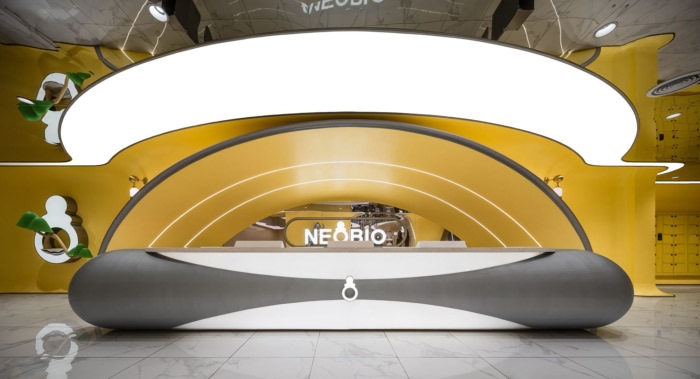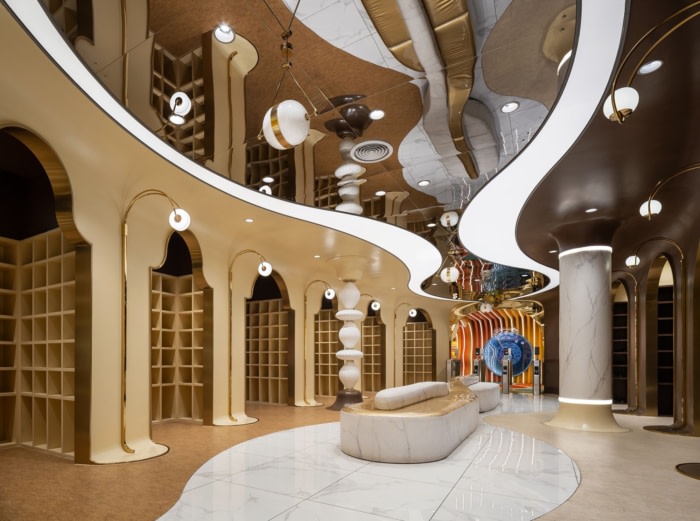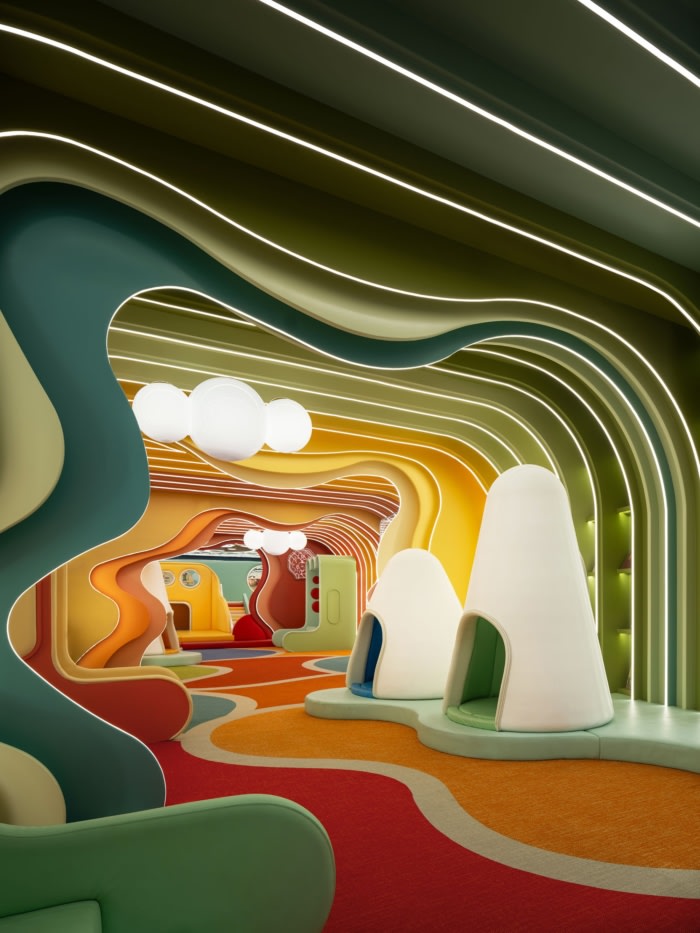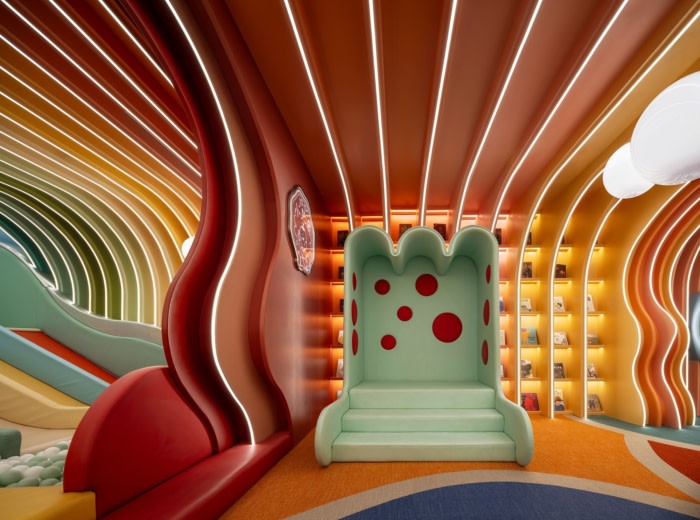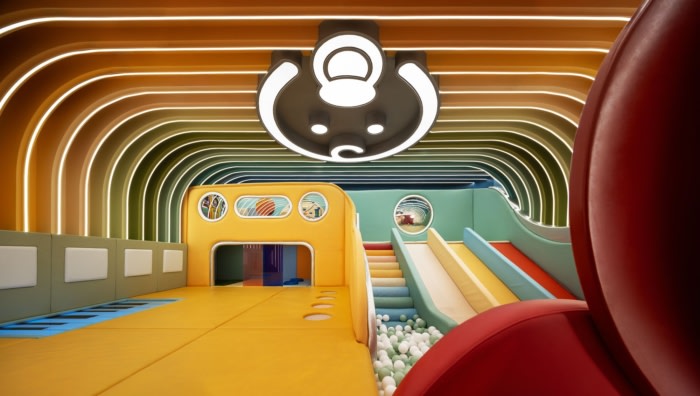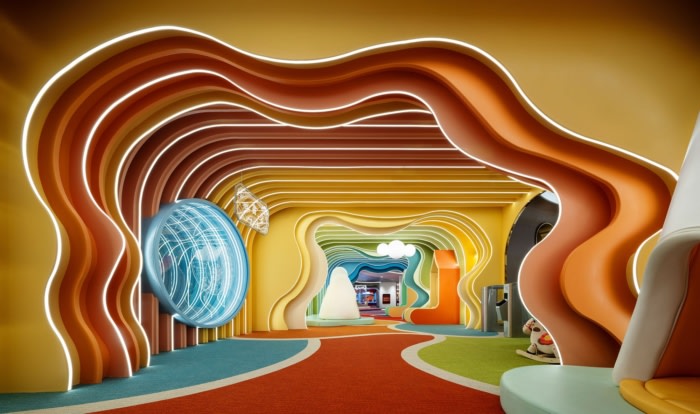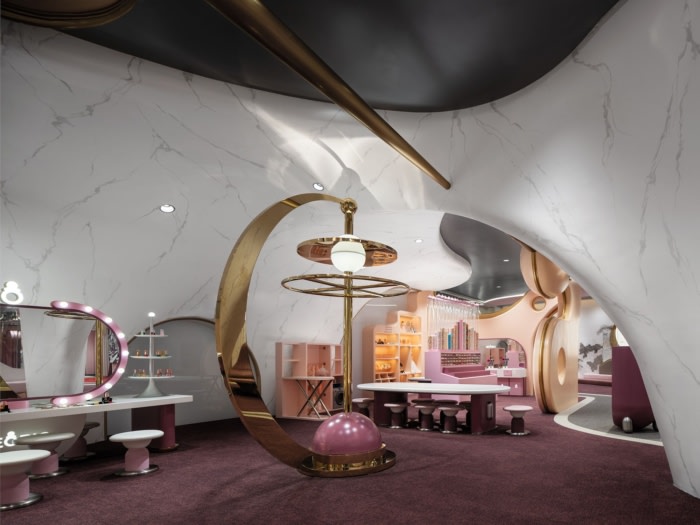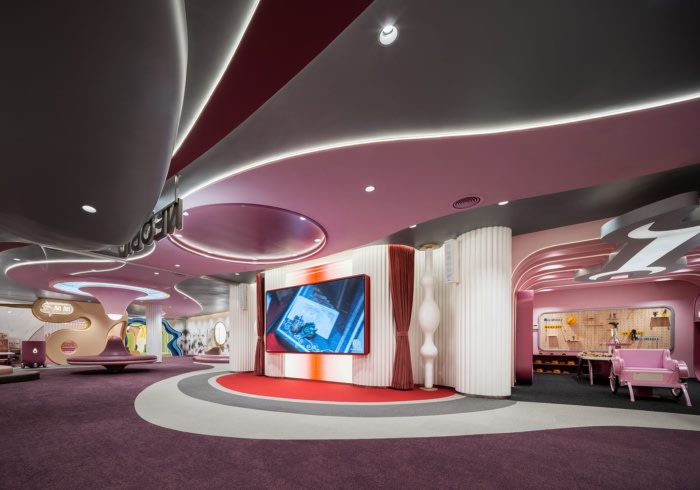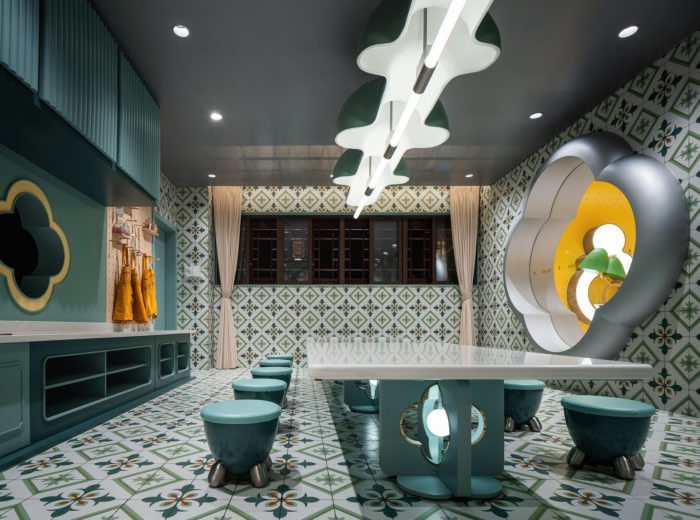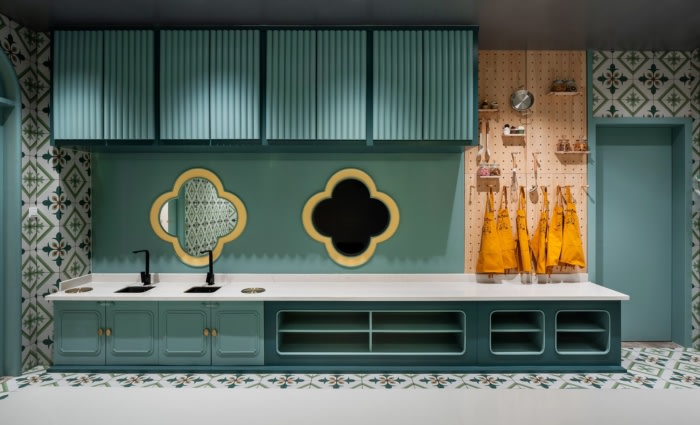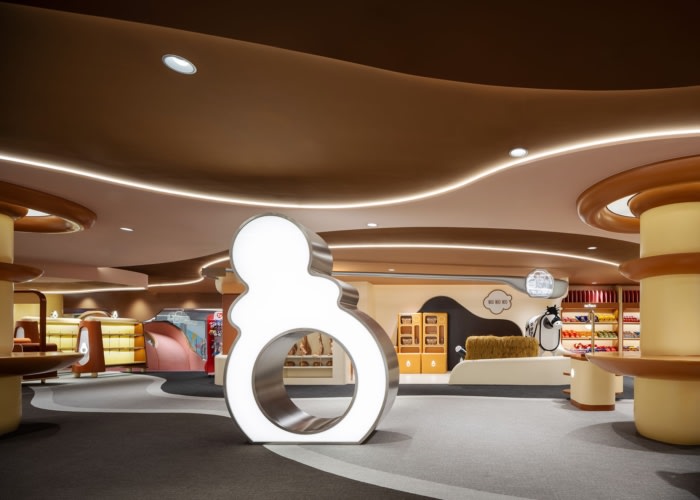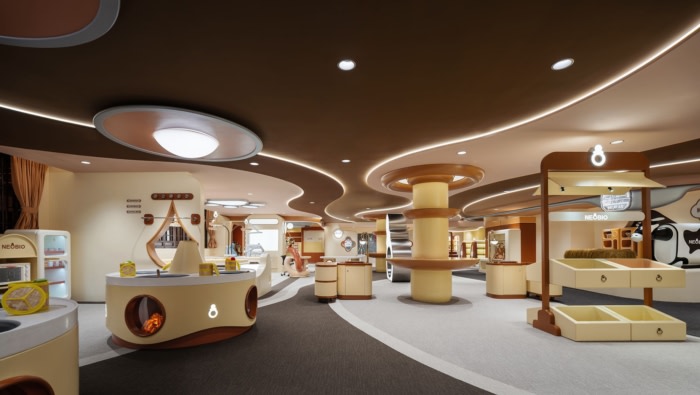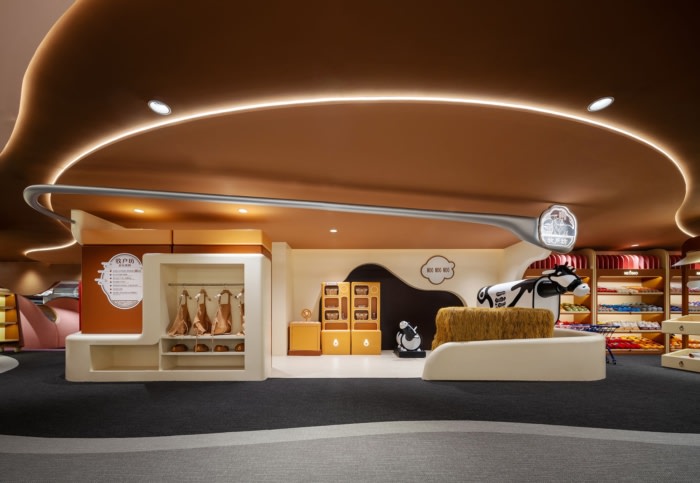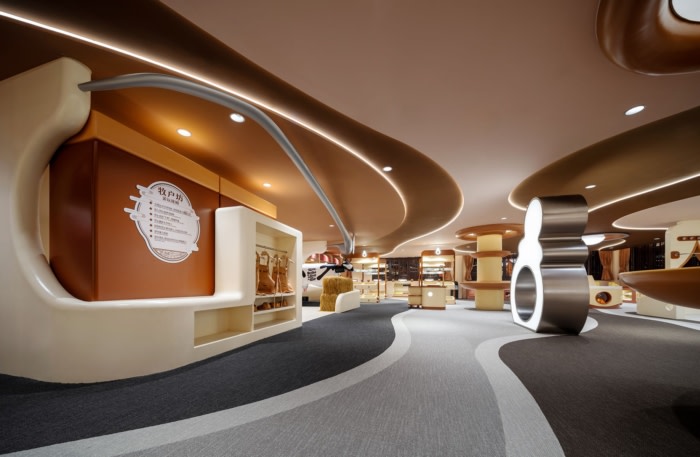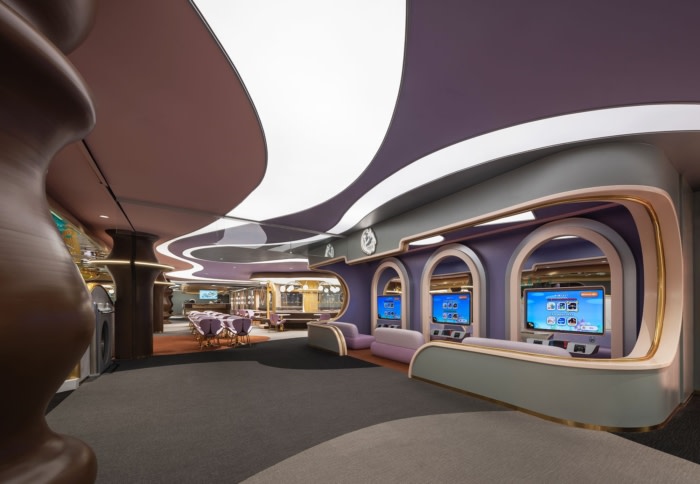NEOBIO Yu Garden
PIG DESIGN collaborated with NEOBIO to create a parent-child wonderland in Shanghai’s Yu Garden neighborhood, blending traditional elements with modern design to activate and inject vitality into the area.
PIG DESIGN, dedicated to “save the city with cuteness,” has crafted over ten diverse parent-child wonderlands for NEOBIO across various cities over the past four years.
The new NEOBIO Yu Garden in Shanghai is a result of a profound co-creation between NEOBIO and PIG DESIGN, building upon their previous successful collaboration. Yu Garden, nestled within the bustling downtown of Shanghai, is a hub that crystallizes cultural and historical contexts. The traditional architectural elements such as the interlocking Dougong wooden brackets, not only exudes a quaint aesthetic, but also engages in a dialogue with the high-rises in Lujiazui CBD, indicating the contrasting yet complementary built environments in the city.
The chief designer, Li Wenqiang, incorporated traditional Chinese paintings and gardens into the space design through artistic expressions. The result is a space that boldly breaks away from conventional Chinese-style design norms, offering a user-friendly scale while conveying Oriental lifestyle aesthetics in an engaging manner.
The streamlined front desk is inspired by traditional pavilions nestled amidst mountain and water landscape, acting as a hub connecting traditional culture with contemporary context. The brand’s teat-shaped logo is ingeniously intertwined with bonsai-inspired elements and traditional door carvings, inviting visitors on an immersive journey that transcends reality.
Moving to the purple Hanfu dressing area, the circular structures at the top and bottom that echo with each other are a metaphor for “hourglass,” which encapsulate past and future within a multidimensional dreamy space.
A fluid circulation intertwines various areas within the space. The well-organized functional layout is interspersed with “structures” and “landscapes.” An array of curated experiences, blending elements of play and education, are deeply rooted in the cultural context of Yu Garden, which allow customers to forge genuine connection with their surroundings.
NEOBIO collaborated with Tonghan Chuntang, a century-old traditional Chinese pharmacy brand in Shanghai, to introduce a unique pharmacy-themed area where customers are invited to use medicinal herbs to craft small sachets. In the culinary education zone, which highlights Shanghai’s culinary heritage, customers can immerse themselves in learning the craft of making Nanxiang Steamed Buns and other local traditional snacks. These hands-on activities serve to foster children’s curiosity and encourage them to explore Chinese culture in an engaging manner, thereby nurturing the aesthetic sensibilities of the new generation.
The restaurant area boasts a vivid and elegant design language, characterized by both freedom and coherence, unifying diverse elements into a harmonious whole. Plastic materials are combined with streamlined seating units, while branch-shaped lamps serve as symbolic representations of the Yu Garden Lantern Festival, signifying its profound cultural significance. Through the interplay of time, color, and lines, a composite scene emerges, enriching the intertwined stories across different times and spaces.
The city is akin to an expanded family unit. In this project, PIG DESIGN adopts an unconventional perspective, to envision a future destination for the next generation within a scenography steeped in the site’s historical heritage. Through imaginative interventions, the project refreshes NEOBIO’s brand image and scene creation. Through the design languages, symbols and visual relationships derived from oriental aesthetics, the designers curated an experiential journey that harmonizes with the city’s fabric.
Respect for the spirit of the place and human-oriented design are central themes that run through the overall space and its details. The two-year design period, accompanied by nearly 4,000 renderings, underscores the complexity of the project. Owing to stringent regulations regarding protected buildings, all facade structures with windows had to be preserved. Moreover, challenges such as floor height restrictions imposed by immovable air ducts were ingeniously resolved through differentiated spatial strategies.
Furnishings designed with child-friendly sizes are complemented by rounded corners, soft upholstery, and anti-slip protection. Visual connectivity is created between the play area and the parents’ rest area. Numerous design considerations stem from the unique spatial characteristics, to maximize the extension of functional systems and foster a new relationship between people and space. These endeavors fully cater to the upgraded needs of parent-child interactive consumption.
Design: PIG DESIGN
Design Team: Li Wenqiang, Zhu Yiyun, He Di, Wu Yicheng, Yang Zhiwei, Shen Taotao, Wang Chen, Xiao Mengmeng, Xu Rumeng
Photography: Qi Shuoqian


